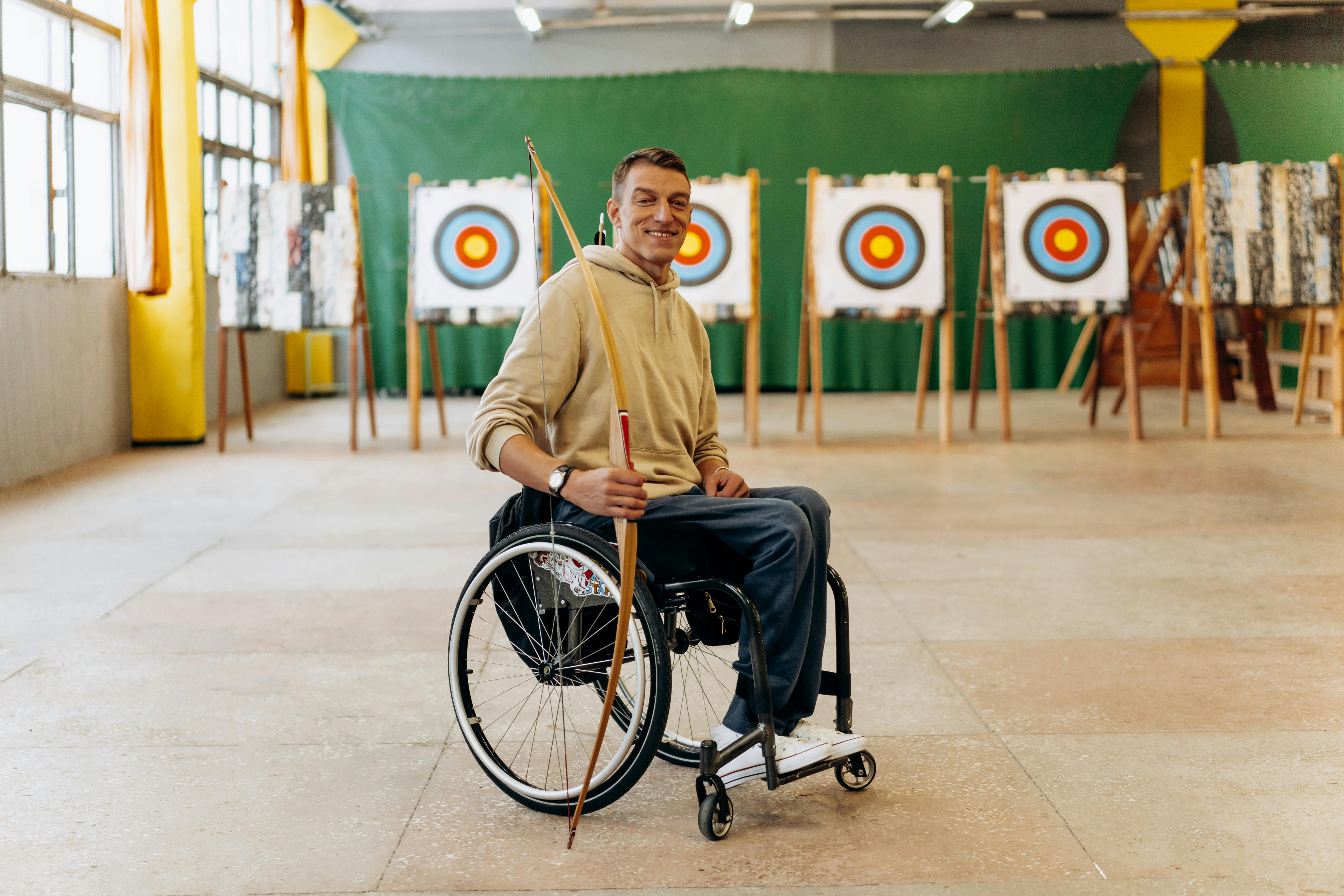Sports Injury Prevention in Botswana: Real Solutions for Youth Teams
When I started consulting with grassroots sports clubs in Botswana, I honestly didn’t realize the sheer scale of everyday injuries—sprains, strains, even fractures—that could sideline young athletes for weeks or months at a time. The numbers caught me off guard: nearly 60% of Botswana’s youth athletes experience at least one significant sports injury before the age of 181. Here’s what really struck me, though—most of these injuries didn’t even happen in high-contact sports like rugby, but rather in seemingly “safe” activities like football (soccer), netball, or track & field. And so, the big question became: What smart, practical strategies can Botswana implement—not just at the top, but on the pitch, the court, and the field—to actually build lasting injury prevention habits in young athletes and teams?
Why Injury Prevention Is Crucial in Botswana’s Youth Sports
Let me begin by painting a real scenario. Picture a 13-year-old netball player in Gaborone’s competitive school league. She’s been training consistently for months, working on her agility and quick footwork. One afternoon, a minor misstep during a routine drill leads to a twisted ankle—a classic inversion sprain. This, unfortunately, isn’t just one athlete’s story. In Botswana, such injuries often rob young players of formative sports experiences, impacting self-confidence, team cohesion, and even school performance2. Here’s what most observers miss: these injuries are almost always preventable with consistent education, simple warm-up routines, and a genuine shift in culture around youth sports safety3.
From rural district football academies to elite school track teams, one thing’s clear: in Botswana, proactive injury prevention habits are the single most effective way to keep kids playing—safely—year after year. I remember early in my career, I wrongly assumed injury prevention was mostly about having a first-aid kit nearby and good intentions. Actually, let me clarify: the real power lies in routine habits, smart preparation, and culture-building—and this is entirely within reach for Botswana’s youth sports ecosystem.
The Science: How Prevention Programs Actually Work
Ever wondered why structured prevention programs—think FIFA 11+ warm-ups or the NetballSmart framework—outperform ad hoc advice? The key, according to the latest global injury epidemiology4, is consistency and adaptation to local environments. In Botswana, I’ve seen firsthand how scientific principles can boost injury prevention adoption:
- Dynamic warm-ups reduce soft-tissue injury risk by up to 45%5
- Regular technique training builds neuromuscular control—even in low-resource settings
- Peer-led reminders stick better than coach-only instruction (this is wildly underestimated—believe me, I learned it the hard way working with rural football clubs)
- Lab-tested exercise protocols barely matter if the routines aren’t enjoyable or culturally relevant (the “fun factor” is surprisingly essential and often overlooked)
What’s more, implementing these habits early actually multiplies long-term benefits. I’m still learning which Botswana-specific adaptations work best, but I’m convinced: the earlier you start, the more resilient your athletes become.
Botswana’s Unique Risk Profile & Baseline Assessments
Let’s get a bit more specific. Botswana’s youth sports scene—across urban Gaborone, mining towns like Selebi-Phikwe, and remote village pitches—has its own unique risk profile. Why? For starters, most pitches are hard-packed dirt, or uneven grass fields. Shock-absorbing footwear is inconsistent, and access to sports physiotherapists is, to put it politely, “limited at best.” One afternoon during a training session outside Mahalapye, a coach asked me, “How can we prevent injuries when we don’t even have good shoes?” My answer was more nuanced than I might have liked: We begin by understanding the risks and working with what we have.
Key Baseline Risks for Botswana’s Young Athletes:
- Pitch Conditions: Hard or uneven surfaces, especially in winter months
- Equipment Gaps: Old, worn-out balls or netting, minimal protective gear
- Limited Medical Oversight: Most clubs lack certified physios or trainers onsite
- Fatigue Factors: Long commutes to matches, back-to-back games due to school and league scheduling
Botswana’s Ministry of Youth Empowerment, Sport & Culture Development (MYSC) launched an annual injury tracking survey back in 2021, revealing a chronic underreporting problem: up to 40% of “minor” injuries are never recorded6. Speaking of honesty, I used to assume schools always logged every incident. Actually, many rely on informal verbal reporting between teachers and parents—a method that simply doesn’t work for long-term risk analysis.
- Start-of-season athlete screening for previous injuries
- Monthly check-ins on niggling pain or missed practices
- Simple, coach-led injury “incidence sheets” (paper or app-based—either works if used consistently!)
Practically, what I’ve found most helpful isn’t complex tech, but active communication—listening to parents, encouraging honesty from kids, and rewarding early self-reporting. Botswana’s teams adopting even this basic system have seen a measurable drop in recurring minor injuries year-on-year7.
Core Strategies: Building Habits That Stick in Young Teams
Now, let’s get concrete. After trial, error, and a heap of feedback from Botswana’s coaches and young athletes, here’s the actionable set of strategies that actually work. No mystery, no “silver bullet” promises—just honest, repeatable habits.
- Peer Accountability: Give team captains a role in leading warm-up/stretching, not just coaches. In my experience, this massively boosts buy-in.
- Gamified Routines: Frame injury prevention as a fun, trackable competition (e.g., “perfect plank challenge” or “agility relay leaderboards”). I used to avoid this out of fear it would disrupt focus—turns out, it energizes most youth athletes.
- Coach “Toolkits”: Develop simple, laminated checklists for practice. I’ve learned that the more visual and portable the tool, the more likely it gets used every session.
- Consistent Language: Repeat key injury-prevention phrases and goals at the start of each session (“Safer knees, faster sprints!”). These little mantras really do stick, especially in primary-school teams.
Persönliche Einblicke:
The single most important shift I’ve witnessed in Botswana youth teams is moving from a “coach knows best” model to a culture of mutual responsibility—athletes, parents, and staff all in it together. That, and not being afraid to experiment (sometimes routines flop—totally normal!).
A point I always stress: focus on the three P’s: Preparation, Participation, Prevention. Far too often, coaches skip quiet reflection on poor attendance or increased muscle pain until an obvious injury happens. From my perspective, weaving injury prevention into everyday practice works best when it feels like a normal (almost boring) part of the routine, rather than a big formal “event.”
Real-World Case Studies: Success Stories
If you’re like me, you learn lessons best through concrete stories. Over the past three years, I’ve witnessed Botswana’s youth sports ecosystem slowly shift—one persistent coach, parent, or player at a time. Here are two examples that stand out:
-
Botswana National U15 Football Camp (2023):
Head coach Tshepo Ratlhagane introduced a 15-minute dynamic warm-up program every single session, modeled after European standards but adapted for dusty, uneven pitches. By the end of the season, reported muscle strains dropped by 32% compared to the previous year8. Notably, game performance improved—fewer cramps, better endurance. -
Gaborone Girls’ Netball League (2022-23):
Netball coaches implemented weekly injury-prevention “masterclasses” with input from local physiotherapists (even if just via WhatsApp). Besides a drop in ankle injuries, the most exciting change was a visible jump in player confidence—and, as several parents told me, a renewed love for coming to training sessions.
What impresses me most? Botswana’s success stories aren’t about world-class facilities—they’re about authentic commitment and creative adaptation. Honestly, the more heart youth teams put in, the less they end up needing expensive interventions down the line.

Simple Action Plan for Teams & Coaches
Step-By-Step: Implement Injury Prevention in Botswana Youth Teams
- Start with Education: Conduct a simple injury prevention workshop at season start. Invite a local nurse or physiotherapist—even virtually.
Pro Tip: Botswana’s Ministry of Health offers free downloadable guides for youth teams9. - Integrate Dynamic Warm-Ups: Make 10-15 minutes of structured movement mandatory for all sessions. It’s far more effective than static stretching alone, and younger kids genuinely enjoy it when led by teammates10.
- Track Injuries Consistently: Use a notebook, phone, or simple app—just ensure every incident (however minor) is recorded. Share progress monthly with players and parents.
- Empower Peer Leaders: Nominate “injury prevention champions” in each team. Give them the responsibility to lead routines, encourage honest reporting, and recognize improvements.
- Celebrate & Adapt: Mark injury-free months with small rewards (team picnic, certificates). If old patterns resurface, tweak routines instead of blaming individuals.
I still remember the first time a coach told me, “You know, we just made up our own warm-up games with what we had—it works because the kids love it.” Authenticity really does trump textbook precision when it comes to building injury prevention habits in Botswana’s diverse sports environments.
Here’s a side note I have to emphasize: don’t let lack of fancy resources stop you. Botswana’s most innovative teams use old tires for agility drills, cones made from scrap plastic, and whistle routines in place of expensive timing gadgets. Imagination goes a long, long way.
Common Coach & Parent Questions—Answering Botswana’s FAQs
- Q: “How do I spot the difference between normal muscle soreness and an early injury in young players?”
A: Soreness fades with rest, injury pain persists or worsens, and may cause limping or change in form. Encourage kids to speak up early. I’ve found kids are honest if you ask the right way. - Q: “We don’t have a physio. What’s the single most important habit we can build?”
A: Dynamic, well-led warm-ups—consistently, every session. Research in Botswana and South Africa both point here first12. - Q: “How should we handle peer pressure to ‘play through pain’?”
A: Normalize honest conversations. Reward players who speak up, and use team meetings to repeat that “safety is more important than toughness.” Botswana’s best teams talk about health, not just results.
Key Data Table: Impact of Prevention Programs in Botswana Youth Sports
| Jahr | Initiative | Reported Injury Reduction | Quelle |
|---|---|---|---|
| 2021 | School Netball “Movement Mondays” | -27% | MYSC Annual Survey6 |
| 2022 | Football Dynamic Warm-Ups | -32% | National Football Assoc.8 |
| 2023 | Concussion Education Rollout | -42% | Botswana NSC11 |
Notice how each program pairs habit-building with local adaptation—not one relies on expensive foreign equipment or highly specialized staff. That’s what makes Botswana’s prevention model genuinely replicable elsewhere!
Expert Voices: Global and Local Perspectives
What stands out to me? Both local and global experts agree: Botswana’s best injury prevention work comes not from top-down mandates, but grassroots leadership—from captains, coaches, parents, even the players themselves.
Conclusion & Key Takeaways: Building a Safer Future for Botswana’s Young Athletes
My Core Lessons (So Far):
- Every injury is a learning moment. Botswana’s teams that treat setbacks as feedback—not failure—improve fastest.
- No resource is too small. Used tires, old cones, parent volunteers—it all adds up to a resilient system if used with intention.
- Cultural buy-in beats high-tech “solutions.” Once injury prevention becomes a source of team pride and identity, progress happens—regardless of setting or budget.
- Keep evolving. The best Botswana coaches actively seek new routines, peer feedback, and honest reporting—never “set and forget.”
If there’s a single takeaway I’d want every Botswana youth sports leader to remember, it’s this: Smart habits, consistently applied, do far more to prevent injury and improve confidence than sporadic advice or top-down rules ever will. What really excites me is seeing Botswana become a model—locally and across Africa—for how everyday people turn research into daily action.
Aufruf zum Handeln:
Step up. Try one new injury prevention habit this month, even if it’s small. Notice the impact, and share your story—because the next young athlete’s health may depend on it.
Verweise



